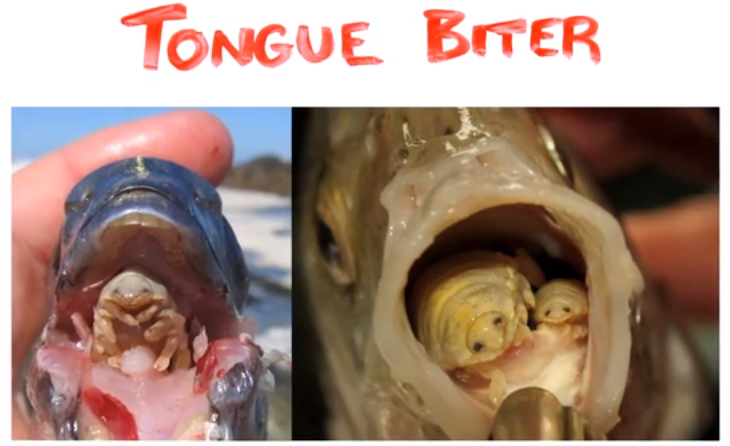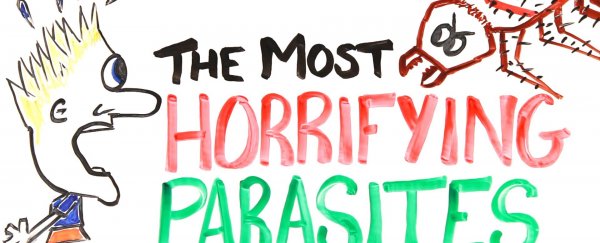Parasites get a pretty bad wrap, and the guys from AsapSCIENCE have teamed up with Kate Hutson, a parasitologist from James Cook University in Australia, to explain why that reputation is totally… justified.
In the episode above, they break down the science of six of the world's creepiest - and most impressively resourceful - parasites out there. Seriously, these guys make tapeworms and botflies look like a walk in the park in comparison.
For starters, there's the innocent mosquito, which we're sure you're all familiar with. But did you know about the filarial worm it can transmit into your blood stream, which can clog up all your lymph nodes and fill your body with fluid, eventually causing elephantiasis?
Then there's the tongue biter, or Cymothoa exigua, which literally chews off fish's tongues while they're still alive, and then lives attached to the stub, feeding off the host's blood and mating, before releasing its babies into the ocean.
And that's not as horrific as the cordyceps fungus, which is infamous for creating zombie ants. After infection, the fungus actually takes over the ant's body and mind, forcing it to leave its colony and move up to a spot that has the ideal temperature and humidity. The "possessed" ant then bites onto a branch and becomes locked into position until it dies, at which point the fungus bursts through the ants head and spreads outwards.
All of that may not sound too bad, but, of course, the rest of the list is made up of parasites that only infect humans. Watch the video above to find out what they are.
We don't mean to alarm you, but forewarned is forearmed, right? Trust us, after watching, you'll never scratch your bum again. You might rethink eating sushi from that dodgy cafe down the road too. And, well, we still just can't get over these guys.

*Curls up into a ball under desk*.
If you're fascinated by the diversity of life, it's not too late to consider studying science at James Cook University - which is where one half of the AsapSCIENCE team studied.
Source: AsapSCIENCE
